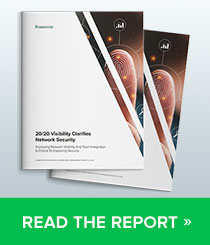In October 2024, Infoblox commissioned a study conducted by Enterprise Strategy Group (ESG) to analyze the economic benefits of Infoblox Threat Defense™ through DNS threat detection and integrations. The study produced an impressive 315 percent return on investment (ROI) for Infoblox Threat Defense, with a payback period of less than six-months.
Challenges Facing Network Security Teams
Network security administrators have likely experienced one or more of the following challenges:
- Managing multiple, fragmented security solutions created by a distributed IT environment that operates in silos and fails to work cohesively
- Relying on reactive approaches in traditional security operations that prove inadequate against the rapid expansion of threat types, highlighting the need for faster, preemptive solutions
- Facing a cybersecurity skills shortage and high alert volumes that drive alert fatigue and curb security operations’ ability to respond to threats effectively
Infoblox Threat Defense Changes the Game
When faced with these challenges, Threat Defense is uniquely positioned to tackle them with several key differentiators:
- Stopping threats proactively before they reach perimeter defenses by preventing endpoints from connecting to malicious domains encountered through phishing/smishing and other deceptive tactics
- Leveraging algorithmic and machine learning-based protections to identify and block command-and-control (C2) communications, domain generation algorithms, Zero Day DNS and data exfiltration attempts before they lead to a breach
- Reducing the burden on downstream security systems and enabling security teams to respond faster to critical threats
Infoblox customers saw substantial savings and benefits in the following categories:
Risk Mitigation
Threat Defense proactively blocks threats at the DNS layer before they impact the network, so customers avoid operational disruption and costly breaches. ESG assumed a conservative 5 percent improvement in overall threat prevention compared to traditional multi-tool security stacks based on significantly improved DNS-based security. Interviewed customers saw the following savings:
- Over 1.5 million raw DNS events were distilled into just 17 meaningful alerts, which were clear and actionable enough for a junior analyst to manage. This level of selection and prioritization not only accelerates remediation and reduces the risk of escalation but also boosts operational efficiency by freeing senior staff to focus on more complex, higher-value tasks.
- Consolidating alert investigation, context gathering and threat response into a single interface through Infoblox SOC Insights eliminated the need for their security teams to pivot across multiple tools. This refined workflow reduced alert resolution time from 60 minutes to just 15, delivering a 4x increase in SOC efficiency.
Operational Savings
To quantify operational savings, ESG focused on efficiencies gained by adopting Infoblox network security solutions. The analysis considered multiple sources of time and effort that were reduced, including alert volume, improved detection, less time spent investigating and triaging, and faster remediation.
By providing enhanced contextual data and reducing false positives, Infoblox helps to optimize investigative workflows, enabling SecOps teams to respond more effectively.
Based on customer interviews, ESG estimated:
- 42 percent efficiency improvement for SecOps teams, driven by reduced alert fatigue and less time spent reviewing firewall and DNS events
- 20 percent improvement in end-user productivity
- 55 percent reduction in day-to-day security operations compared to environments without a DNS security solution
Savings Avoided Legacy Costs
Interviews with Infoblox customers revealed that in addition to efficiency gains, enhancing security effectiveness and reducing downtime, implementing Threat Defense enabled organizations to avoid the costs of maintaining legacy solutions. Several customers shared that Infoblox capabilities enabled them to avoid adding DNS security features to existing tools while allowing them to remove tools they no longer require. This consolidation led to direct cost savings by reducing licensing fees, infrastructure, maintenance costs and time and effort required to maintain and support those solutions.
Conclusion
DNS is a strategic layer of defense that’s underutilized in most organizations’ security stacks. With Threat Defense, SecOps teams detect and block threats at the DNS level, often before they propagate further into the network.
If your organization is seeking to strengthen threat detection, reduce operational complexity and close security blind spots at the DNS layer, ESG recommends evaluating whether Infoblox Threat Defense with SOC Insights is right for your organization’s needs.










